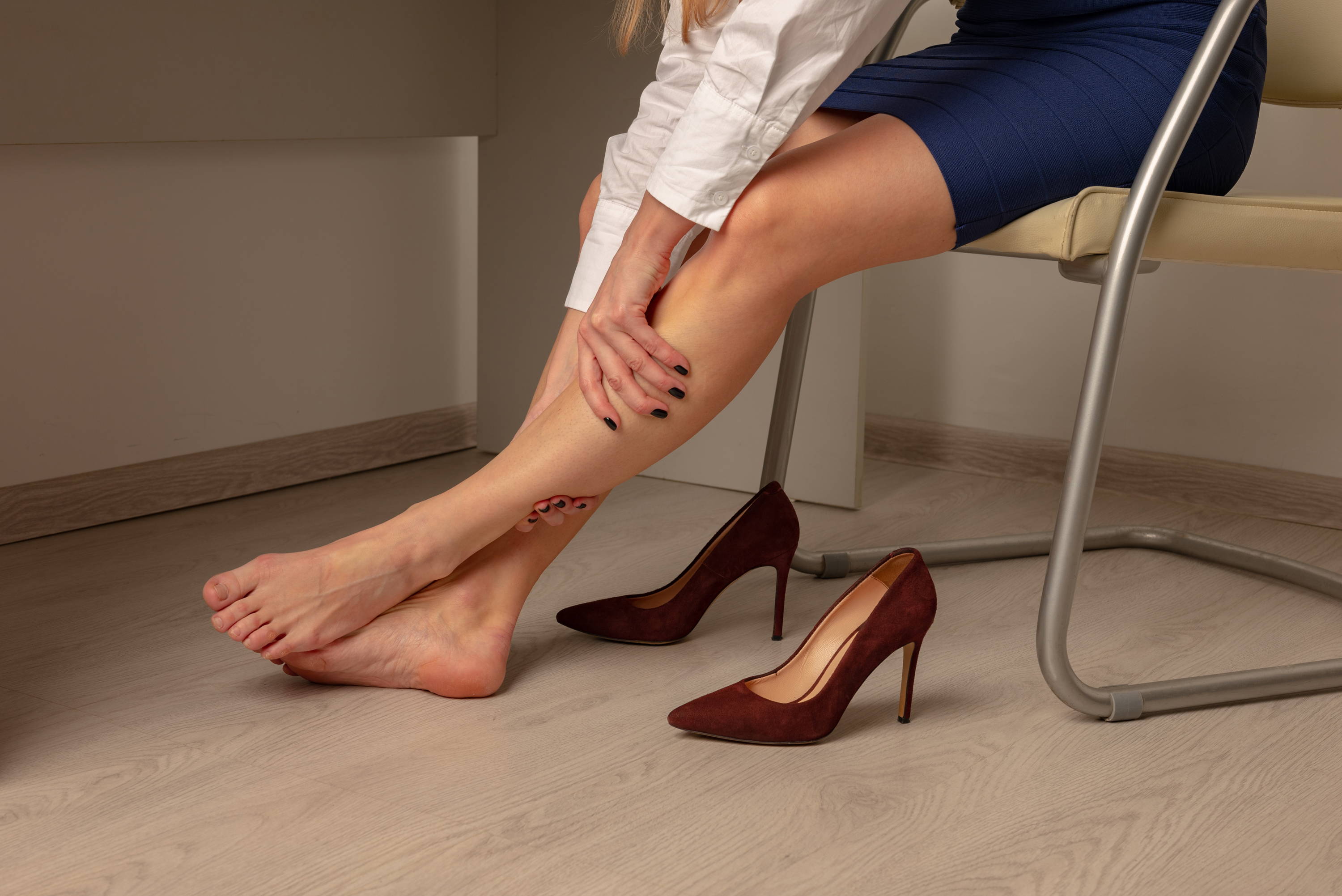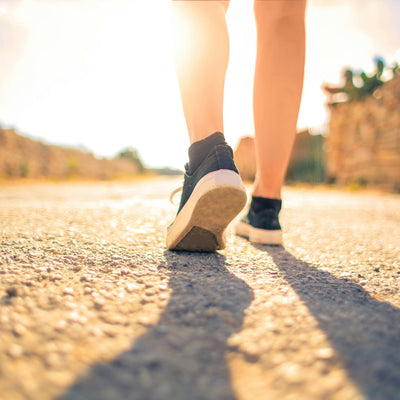Nearly 70% of women who wear high heels complain of foot pain.
Whether you wear heels every day or just on special occasions, it’s wise to maintain a routine to keep your ankles and feet healthy and injury-free. Foot pain, and long-term complications such as joint problems, corns and calluses, and ankle instability result from wearing heels over time. Although contrary to popular belief, high heels don’t directly cause bunions. They can, however, enhance the pain from a bunion due to irritation of tendons and ligaments and pressure.
The natural alignment of our foot isn’t designed to sustain long-term stress and friction from high heels. High-heel wearers may suffer from foot-related complications such as hammertoes, a condition resulting in bent and deformed toes as well as back pain and posture abnormalities that can disrupt the whole spine. Pain at the ball of the foot is also common while wearing these shoes. This is due to the increased pressure on that part of the foot as a result of the shoe design.
If you do wear heels even occasionally, it’s smart to be aware of the potential health risks and take the necessary precautions to maintain overall foot health and well-being.
High-Heel Exercises
Here are some simple strengthening and stretching exercises to help minimize injuries and protect your feet while wearing heels. Combining these exercises with proper footwear choices and occasional breaks from heels can significantly enhance foot health and comfort.
Toe Tapping
While sitting in a chair with feet flat on the floor, pull your toes towards the ceiling and bring them back down. Do 3 sets of 10 repetitions for a total of 30. This exercise improves ankle strength and range of motion and helps boost circulation and flexibility in the toes.
Ankle Circles
While seated, lift one foot off the ground. Rotate your ankle in clockwise and counterclockwise circles. Repeat for 15-20 seconds and switch to the other foot. Variation: trace each letter of the alphabet with each foot for a nice challenge. Ankle exercises improve flexibility and help ease stiffness in the ankle joint.
Arch Stretch
While seated, pull one foot up and rest it on the opposite knee. Pull your toes back gently towards your shin and stretch the arch of your foot. Hold for 20 seconds and then stretch the opposite foot. Do this exercise a few times daily.
Tennis Ball Stretch
This exercise can be done seated or standing (hold on to the countertop for support) place a tennis ball under one foot. Roll beneath the ball of your foot, arch, and heel while applying slight pressure. This relaxing stretch can be done first thing in the morning and anytime during the day to relieve tightness, soothe sore muscles, and increase blood flow.
Calf Raises
While holding onto a countertop or table, stand with your feet hip-width apart. Slowly lift your heels onto the balls of your feet. Hold for 10 seconds and then lower your heels back down. This exercise stretches tight calf muscles that tighten when heels are worn. Do 2 repetitions of 10 twice daily.
Heel Cord Stretches
Stand facing a wall, and take one step back while keeping your knee straight and both heels flat on the floor. Bend the front knee and press hips forward, gently stretching the calf and Achilles. Hold for 30 seconds as tolerated. Repeat on the other leg. Do 2-3 sets of 10 on each leg. This exercise stretches the Achilles tendon and calf muscles and increases flexibility.
Healing Sole Stretches
Orthopedic surgeon Dr. Meredith Warner invented a custom flip-flop to address foot pain from plantar fasciitis and other issues. “One of the most common reasons people come to see me is heel pain,” she shares. Wearing The Healing Sole flip-flops for 10 minutes daily to start and working your way up to hour-long intervals helps stretch the foot and the muscles used when wearing heels.
Wearing high heels can worsen plantar fasciitis and a condition called Morton’s Neuroma and compromise your overall foot health.
The Healing Sole is designed to stretch and strengthen the intrinsic structures of the foot with every step and is a noninvasive option, instead of painful cortisone shots and surgery, to provide help with pain relief.
Foot Pain Relief Cream is a natural alternative to NSAIDs minus the dangerous side effects. A soothing yet potent custom blend of essential oils, PEA, Lidocaine, and menthol. Relieves muscle pains, inflammation, and joint stiffness. Make this wellness rub part of your daily foot care regime.
Tart Cherry Extract is recommended by Dr. Warner to support your overused muscles, joints, and fascia. Packed with antioxidants, this formula combats free radicals and reduces inflammation as effectively as over-the-counter pain relievers. It contains 1500 mg of pure tart cherry, relieves gout and arthritis symptoms, and aids in recovery from intense workouts.











 Foot Health And Nutrition
Foot Health And Nutrition Effective Strategies for Managing Osteoporosis Foot Pain: Insights from Scientific Studies
Effective Strategies for Managing Osteoporosis Foot Pain: Insights from Scientific Studies